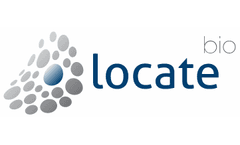Bone Formation Articles & Analysis
17 news found
Several peptides have been shown to support and stimulate the bone healing response and have been proposed as therapeutic vehicles for clinical use. ...
” RevBio has optimized its bone adhesive biomaterial primarily by adjusting the pH of the material as it undergoes its self-setting reaction. ...
The data demonstrate that elderly patients in Denmark treated with i-FACTOR bone graft plus local bone had a statistically significantly higher fusion rate compared to allograft plus local bone. ...
P-15L Bone Graft is based on a small biomimetic peptide (P-15) technology developed by Cerapedics to support bone growth, and is designed to be used as a substitute for autologous bone. In 2015, the company’s first-generation bone graft became the first bone graft to be approved for use in the cervical ...
Cerapedics Inc., an ortho-biologics company dedicated to enhancing the science of bone repair, today announced that the U.S. Food and Drug Administration (FDA) has granted Breakthrough Device designation for its investigational P-15L Bone Graft for the treatment of degenerative disc disease (DDD). ...
“An indication for the use of P-15L Bone Graft in lumbar spine fusion would unlock a significant addressable market expansion opportunity that represents 80% of the total bone graft market. ...
Synergy Biomedical, LLC, a developer of innovative bone graft products for spine and orthopedic surgery, announced the publication of a basic science study describing the findings and scientific strategies of controlling the bone formation response of bioactive glass. ...
The drug-device combination product is based on small peptide (P-15) technology that accelerates new bone formation in patients with degenerative disc disease. It is in a new category of bone graft technology and is one of only two drug-device combination products approved by the U.S. ...
-based biopharmaceutical company has discovered and patented a novel molecular pathway intended to treat metastatic bone lesions Latest patent issuance follows previous patents for methods in stimulating bone growth, promote controlled bone creation and repair of large segmental bone defects using ZetaMet™ Company’s ...
Currently, the standard treatment for chronic osteomyelitis is surgical debridement, long-term, high-dose administration of antibiotics, and – for larger defects – bone grafting which often requires a second surgical procedure to remove the non-resorbable bone graft. ...
i-FACTOR Peptide Enhanced Bone Graft must be used inside an allograft bone ring and with supplemental anterior plate fixation. About Cerapedics Cerapedics is an ortho-biologics company focused on developing and commercializing its proprietary small peptide (P-15) technology platform. i-FACTOR Peptide Enhanced Bone Graft is the only biologic ...
i-FACTOR Peptide Enhanced Bone Graft must be used inside an allograft bone ring and with supplemental anterior plate fixation. About Cerapedics Cerapedics is an ortho-biologics company focused on developing and commercializing its proprietary small peptide (P-15) technology platform. i-FACTOR Peptide Enhanced Bone Graft is the only biologic ...
The patent, entitled Composition and Methods to Promote Bone Formation, covers the use of methods for stimulating bone growth using the Company’s small molecule, ZetaMet™. ...
Carmel, Indiana (July 14, 2020) – Nanovis, a unique technology company focused on nanotechnology for improving bone growth and fighting infection, today reported a record sales month in June 2020. ...
ByNanovis
” Cerapedics commercialized i-FACTOR Bone Graft beginning in 2016. The drug-device combination is based on synthetic small peptide (P-15) technology that accelerates new bone formation in patients with degenerative disc disease. ...
These patents, entitled Composition and Methods to Promote Bone Formation, include claims covering the use of methods for stimulating bone growth using its novel molecular pathway, ZetaMet™. ...
The company also intends to investigate the use of WNT3A in additional bone and other tissue repair applications. Ankasa has obtained multiple proofs of efficacy for WNT3A in various models of bone repair in animals. If approved for commercial use, it could serve as an alternative to the protein BMP-2, a protein that is used commercially to induce ...








